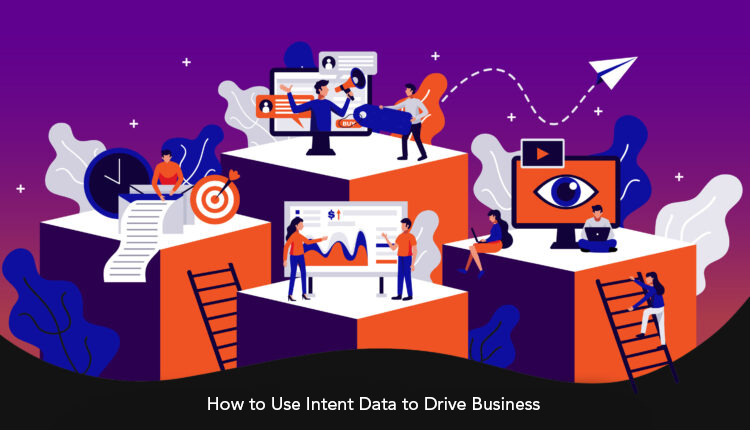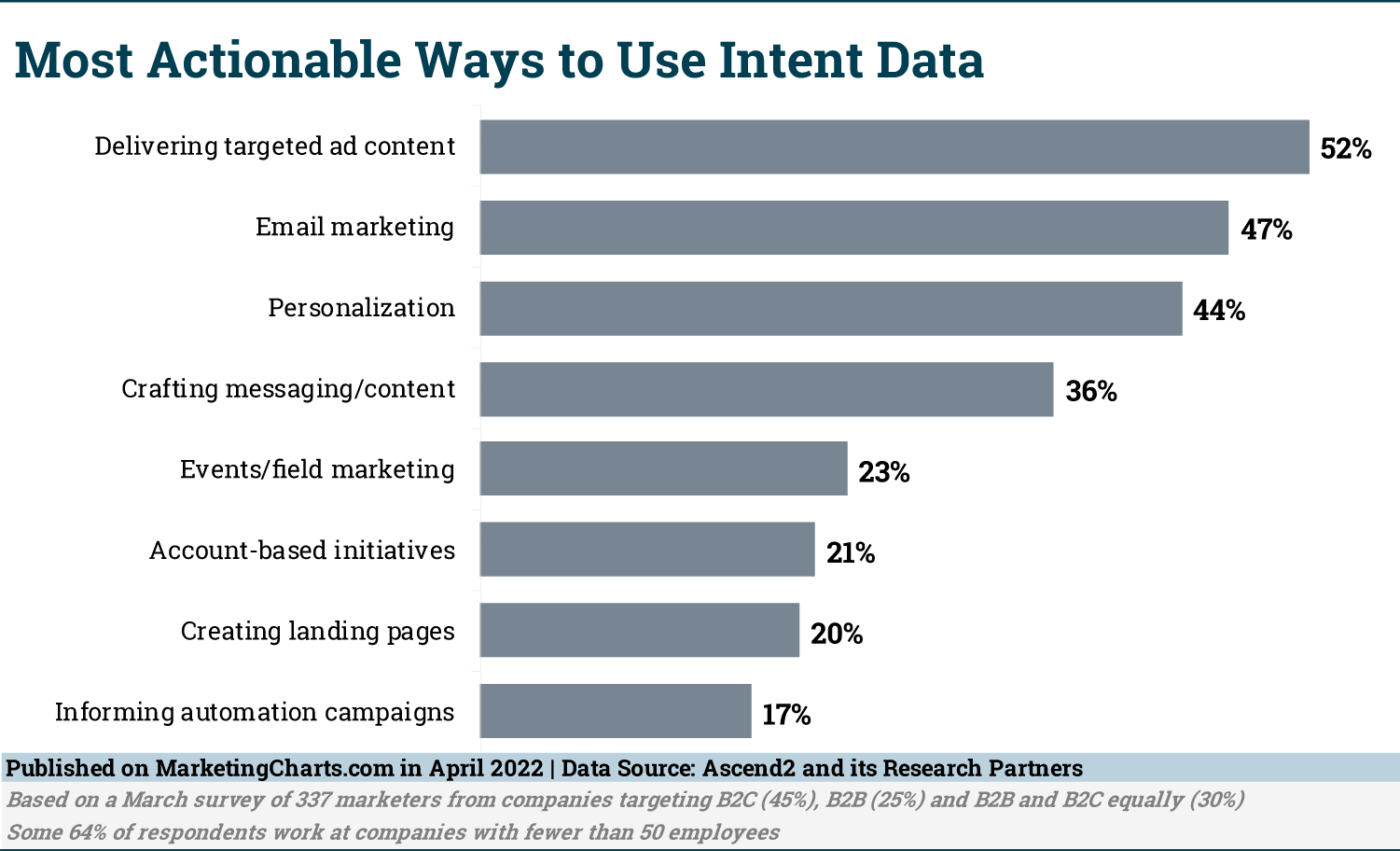
How to Use Intent Data to Drive Business
Knowing what your target audience wants before they do, makes it easier than ever for you to convert them into paying customers. Intent data makes this possible. It’s one of the most powerful ways to research, find, and connect with your ideal customers.
What Intent Data Is
Intent data is information collected about a web user’s behavior/content consumption that provides insights into their interests. This insight often indicates potential intent to take a specific action. For businesses, that means understanding who might be getting closer to a buying decision or the nuances of the most common path towards a sale or conversion.
Where You Find Intent Data
First-party Intent data can be captured via your website or content libraries, while third-party Intent data providers monitor which of your potential customers are actively searching elsewhere online. This data is usually collected through a data co-op.
The buyers’ activity is scored based on the actions they take while navigating through various websites, looking at what topics are being researched and to what extent. The data is then translated into actionable insights for the sales and marketing teams.
Typically, these teams are alerted when their target clients are taking action online which would suggest their readiness to invest in the products and/or services their organizations offer. If used correctly, Intent data can help convert customers and drive sales more quickly and efficiently.
Different Types of Intent Data
Intent data uses activity indicators like IP addresses and browser cookies to track customer activity. There are two types of Intent data – first-party and third-party intent data.
First-Party Intent data
First-party Intent data is what you would most likely think of when you imagine tracking valuable insights about buyer activity online: what’s happening on your website. You likely already track first-party data through analytics tools, marketing automation platforms, or the backend of your own website.
This data is often anonymous, or you might be able to identify the business and individual with IP identification or previously submitted forms. The downside to depending solely on first-party Intent data is that you’re only gathering valuable customer data during one part of the buyer’s journey, and you could be overlooking ideal prospects that never make it to your website at all.
Third-Party Intent Data
Third-party Intent data observes buyer research everywhere else, so you can gather a more holistic view of your prospect’s activities. Customers typically don’t make one visit to one website to make a buying decision. It’s likely a series of events over time, with the majority of research happening before a buyer even visits your website.
While first-party intent data offers the visibility of one important step in the buyer’s journey, third-party intent data gives organizations a view into the entire path along the way.
Leading organizations pair first and third-party data as part of a holistic view of the buyer’s journey. Often the third-party data surfaces research first, which can help businesses get a jump on their competition and create a more personalized experience when the buyer actually arrives at the business’s website. If businesses only leverage data from prospect visits to their own assets, they may not capture customers who are only researching their competition.
How Intent Data is Used
Intent data can be used to launch and run more sophisticated sales and marketing programs. If you are able to better understand the pain points and interests of your target audience from the moment they begin the evaluation and research process of their buying journey, you can tailor your interactions to those needs and build more valuable connections.
From a tactical perspective, most businesses start using Intent data to help their sales development teams prioritize a list of target accounts to call on. More advanced organizations can create unique groups and targeted lists based on specific activities, and reach audiences in more personalized ways. If you can identify a prospect’s place in the sales cycle, you can feed them the highly-relevant content they need to overcome the next big hurdle in the buying process. When you are able to understand the challenges of your audience and provide a solution, it’s easier to build more meaningful and trusting connections that lead to sales. When used properly, intent data may significantly increase conversions and sales.

According to an Ascend2 Report and its Research Partners, the majority of marketers believe that the effectiveness of intent data has grown over the past year.
There’s still a way to go before achieving full integration of intent data: only 1 in 4 respondents said they have intent data implemented and integrated into their overall strategy, with others in the process of doing so (19%), are planning to (17%) or have not yet having started the process (19%). Just 1 in 5 either have no plans to use intent data or have stopped doing so.
There are various challenges to full integration of this data, first and foremost creating an overall strategy. Others pointed to obstacles integrating intent data with other data, deriving meaningful insights, and finding the right intent data solution.
A majority plan to up their intent data budget by up to 10% (42%) or more than 10% (12%), while a previous report found that for high-growth companies (primarily in the tech industry), intent data solutions represented the fastest-growing marketing technology category.
As for the most actionable ways to use intent data, respondents to the Ascend2 survey said that it is best for delivering targeted ad content (52%), email marketing (47%) and personalization (44%), while others pointed to its use for crafting messaging and content (36%).
About the Data: The results are based on a March survey of 337 marketers from companies targeting B2C (45%), B2B (25%) and B2B and B2C equally (30%). Some 64% of respondents work at companies with fewer than 50 employees.
Need assistance developing your marketing and intent data strategy? Schedule a call or email Lori Berson at lberson@BersonDeanStevens.com.
BersonDeanStevens has been a recognized brand strategy and marketing leader for over 25 years, including over a decade in marketing and sales automation. We work in partnership with you to differentiate your brand and achieve your business goals. Client list.